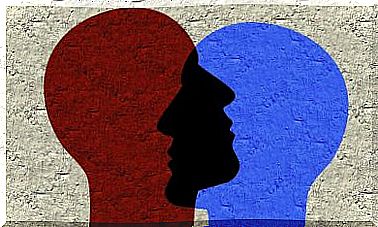The 7 Laws Of Emotions According To Nico Frijda

Psychologist Nico Frijda was a renowned researcher. In 2006 he presented a work in which he exposed what, in his opinion, the laws of emotions are. He intended to set fixed standards in this regard.
Emotions are hard realities to classify. Even more complicated is finding common emotional patterns from one individual to another. However, from extensive research, Frijda postulated that there are general rules that can be applied universally.
The researcher himself pointed out that as in all rules, in this case there are also exceptions. However, in his opinion, there are more fixed patterns than deviations. Although Frijda has established 12 laws of emotions, they can actually be synthesized into seven. Are the following:

1. Situational meaning, the first of the laws of emotions
For Frijda, emotions are the result of specific situations. They do not arise spontaneously, unrelated to anything, but derive from specific scenarios. As much as such scenarios only exist in the imagination, they are always associated with real situations.
Therefore, two similar situations generate the same kind of emotional response. So a loss leads to sadness and a gain to happiness. No matter what kind of loss or gain it is, the emotional response is always the same.
2. Apparent reality
This is one of the most interesting laws of emotions. It postulates that people react emotionally to what they consider real. Not what is real, but what we consider real.
It is the way of interpreting reality that gives rise to emotions, not reality itself. This is why, for example, we may burst into tears watching a movie or we feel fearful when imagining a danger that has not actually appeared.
3. Habituation, comparison and change
In this case, there are three laws of emotions: habituation, comparison and change. The law of habituation says that we always get used to our circumstances and see them as “normal”, even if they aren’t. The emotional response to the usual is not intense.

The law of comparison indicates that we are always comparing the strength of our emotional responses, whether consciously or unconsciously. While the law of change points out that when faced with a novelty, the emotional response is more intense.
4. Hedonic asymmetry
This is one of the most baffling laws of emotions. She postulates that it is much harder for us to get used to negative situations. The emotional response in this case is one of resistance and the application of the law of habituation is more relative.
With positive situations, the opposite happens. We get used to them much more easily. Therefore, and because we get used to it, positive emotions tend to be less and less intense until they disappear.
5. Conservation of the situational moment
Negative experiences tend to hold your emotional power for a long time. The impact they produce can last for several years. Emotions are still there, even if the situation is over.

This remains unchanged until a similar situation arises and can be reassessed positively. In other words, it is necessary to live again and resolve properly so that the negative emotion disappears.
6. Closing and attention to consequences
The law of closure says that emotions tend to forge an absolutist idea of reality. When the intensity of emotion is too great, everything is seen in black and white. There is only one face of the problem.
Another law of emotions is attention to consequences. This law points out that people can shape emotions according to the consequences they can provoke. For example, it is possible to be very angry but not to be aggressive unless the consequences are not serious.
7. The lightest load and the biggest gain
The law of lighter load says that people can change their emotions if they interpret situations differently. Human beings tend to look for the interpretations that most help them to ward off negative emotions. For example, “if I’m going through this bad situation it’s because something good is approaching”.

The law of greatest gain indicates that we seek to reinterpret situations to gain emotional benefit from this new view. For example, we are afraid of heights and assume that people who challenge this fear are really irresponsible.
Frijda’s laws of emotions are a contribution to this long work of understanding human emotions. Although this researcher posits them as laws, in fact they have not been established as such by all schools of psychology. However, this does not diminish the validity of their conclusions.








